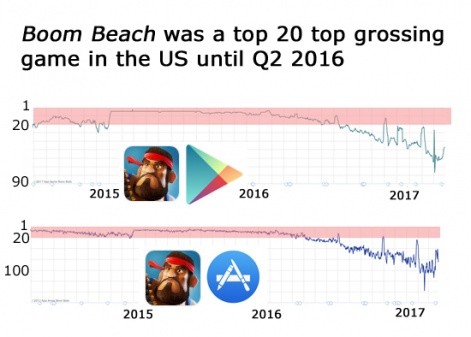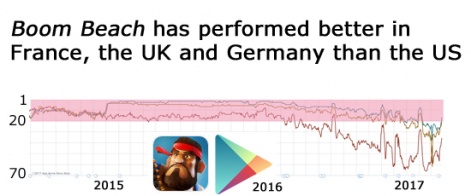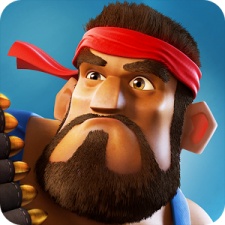From the get-go, let’s be clear. For any developer other than Supercell, Boom Beach would be a total success.
In the three years since launch, the mobile strategy game has generated hundreds of million dollars, and still pulls in tens of millions annually.
But Supercell isn’t any other developer.
It’s only released four games, and two of them generate over a billion dollars annually.
(Being a social farming game, Hay Day is operating on a different level, of course.)
As in the family boasting a Nobel Prize winner and an Oscar winner, getting a Ph.D remains an achievement, just not a comparative success.
Yet, Supercell remains committed to the game you could be argue offers a cleaner, more nuanced and more enjoyable experience than Clash of Clans, which gained its success and longevity partly due its launch timing within the wider explosion of mobile gaming.
The laughing face of evil
Aside from making great games, one of Supercell’s advantages as a successful mobile game developer is its ability to spend hundreds of millions of dollars marketing its games. Typically mobile developers will spend 20% to 30% of overall revenues on marketing.
TV advertising boosted Boom Beach into the US top 10 grossing charts.
This, combined with regular updates, was key to Boom Beach’s early success.
A top 20 top grossing game in the key US market on the App Apple Store and Google Play store, it wasn’t until early 2015 and the start of TV advertising that it nailed down a lucrative top 10 position; something it held until early 2016.
Related to this was the introduction and development of personality within the game, notably the comically villainous Dr. T.
Inspired by Austin Powers’ Dr Evil and assisted by the extendable arms of his robot companion , Dr. T has underpinned key in-game events such as the four Mega Crab raids.
Other tweaks, significant if slight, include the addition of a $2.99 monthly subscription so players can upgrade two buildings simultaneously. At launch, Boom Beach’s restriction of a single upgrade was a novel design and monetisation decision.
End of the beginning
More recently, however, Boom Beach has been in marked decline.
It dropped out of the US App Store top 20 top grossing ranking in April 2016 and even spiked outside of the top 100 in early 2017.
Similarly, on Google Play, it dropped out of the top 10 top grossing position in February 2017, dropping to a low of 77 in early March 2017.

Significantly, this period coincided with the launch of Clash Royale and suggests that Supercell was focusing resources - staff and cash - on its new game.
European beachhead
But it’s not game over for Boom Beach just yet. The most recent update added the first two in a series of Hero characters, giving the game an immediate boost back up the charts.
And outside of the US, it’s important to note Boom Beach has always performed better in key markets including France (its #1 big market), Canada, the UK and Germany.

It’s also done well in some of the big Asian markets, notably South Korea, where it remains a top 100 top grossing Google Play title, although it doesn’t have the popularity of Clash of Clans, which is top 100 top grossing game in South Korea, China and Japan.






















